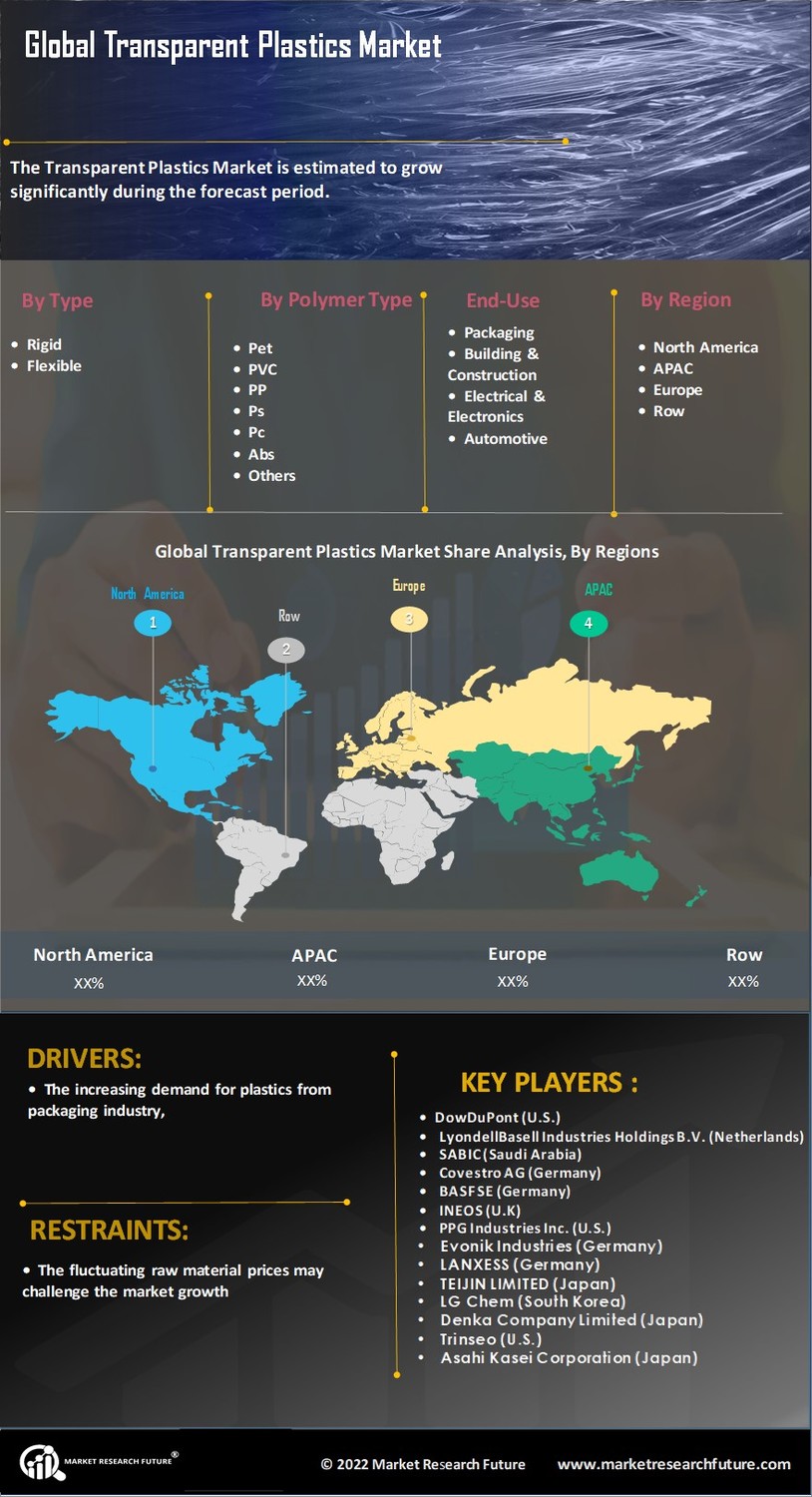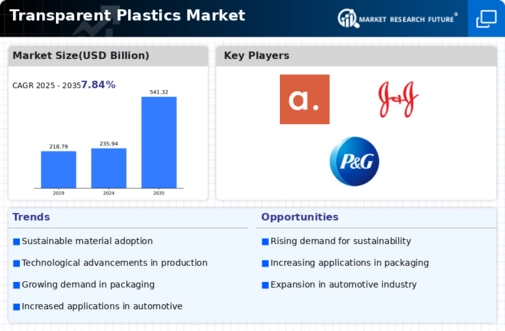Market Growth Projections
The Global Transparent Plastics Market Industry is poised for substantial growth, with projections indicating a market value of 235.94 USD Billion in 2024 and an anticipated increase to 541.32 USD Billion by 2035. This growth trajectory suggests a compound annual growth rate of 7.84% from 2025 to 2035, highlighting the robust demand across various sectors. The market dynamics are influenced by factors such as technological advancements, sustainability initiatives, and the expanding applications of transparent plastics in packaging, automotive, and electronics. These projections underscore the potential for innovation and investment in the transparent plastics sector.
Growth in Automotive Applications
The Global Transparent Plastics Market Industry is increasingly driven by the growth in automotive applications, where transparent plastics are utilized for windows, dashboards, and lighting components. The automotive sector's shift towards lightweight materials to improve fuel efficiency and reduce emissions aligns with the properties of transparent plastics, which offer both strength and clarity. As the industry evolves, the demand for transparent plastics is projected to rise significantly, contributing to the market's expansion. By 2035, the market could reach 541.32 USD Billion, underscoring the potential of transparent plastics in meeting the evolving needs of the automotive industry.
Increased Focus on Sustainability
An increased focus on sustainability is reshaping the Global Transparent Plastics Market Industry, as consumers and manufacturers alike prioritize eco-friendly materials. Transparent plastics, particularly those derived from renewable resources or designed for recyclability, are gaining traction in various applications. This shift is driven by regulatory pressures and consumer demand for sustainable products, prompting manufacturers to innovate and adopt greener practices. As a result, the market is likely to see a significant transformation, with sustainable transparent plastics becoming a preferred choice across multiple sectors, further propelling market growth and diversification.
Rising Demand in Packaging Sector
The Global Transparent Plastics Market Industry experiences a notable surge in demand from the packaging sector, driven by the need for lightweight, durable, and visually appealing materials. Transparent plastics, such as PET and PVC, are increasingly utilized in food and beverage packaging due to their excellent barrier properties and recyclability. In 2024, the market is projected to reach 235.94 USD Billion, reflecting the growing consumer preference for sustainable packaging solutions. As companies strive to enhance product visibility while ensuring safety and compliance with regulations, the packaging segment is likely to remain a key driver of growth in the transparent plastics market.
Expanding Applications in Electronics
The Global Transparent Plastics Market Industry is witnessing expanding applications in the electronics sector, where transparent plastics are increasingly used for screens, casings, and components. The demand for lightweight, durable, and aesthetically pleasing materials in consumer electronics is driving this trend. Transparent plastics provide excellent optical clarity and impact resistance, making them ideal for various electronic devices. As the electronics industry continues to innovate and evolve, the need for high-performance transparent plastics is expected to grow, contributing to the overall market expansion. This trend reflects the dynamic interplay between technological advancements and consumer preferences in the transparent plastics market.
Technological Advancements in Manufacturing
Technological advancements in the manufacturing processes of transparent plastics significantly influence the Global Transparent Plastics Market Industry. Innovations such as 3D printing and advanced extrusion techniques enhance the production efficiency and quality of transparent plastics. These technologies allow for the creation of complex shapes and designs that were previously unattainable, thereby expanding applications across various sectors, including automotive and electronics. As manufacturers adopt these cutting-edge technologies, the market is expected to witness a compound annual growth rate of 7.84% from 2025 to 2035, indicating a robust growth trajectory fueled by enhanced production capabilities.














Leave a Comment